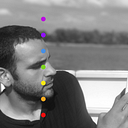I’ve grown weary of building digital products that capture people’s attention. The word “engagement” gets tossed around lightly. It’s assumed to be a positive goal; an engaging digital product is something teams should strive to build. Coworkers have shared the book Hooked by Nir Eyal with me and we’ve discussed Richard H. Thaler and Cass R. Sunstein’s Nudge: Improving Decisions About Health, Wealth, and Happiness in an effort to tap into behavioral economics and clinch the market, innovate, and develop addictive designs that increase traffic. While these books have been helpful for understanding the power of design to affect our behavior, they’ve left me with a sinking feeling of guilt. We should focus on meaningful products rather than engaging ones.
One of the best books I’ve read that addresses this problem is Jorge Arango’s Living in Information: Responsible Design for Digital Places. In his chapter on engagement, Arango articulates the link between building a product for engagement and seizing a user’s attention. He pieces together how media and publishing bear responsibility for the monetization of attention using the historical example of The Sun that capitalized on a fake story in order to sell more newspapers. Arango writes:
“Sensational content produced sensational results: The Sun soon became very popular, and advertising became established as an effective means for…
